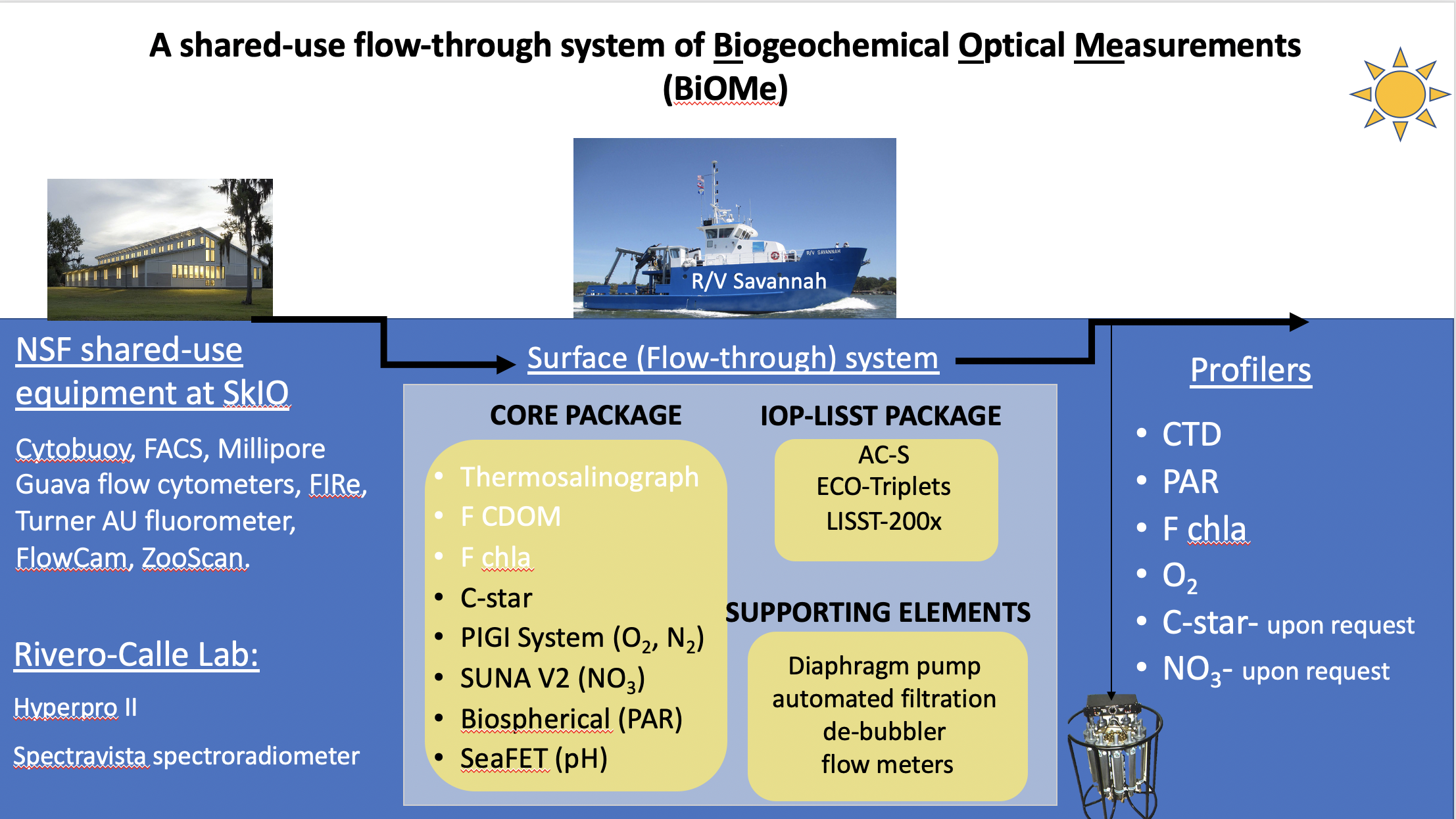
Summary
Overview: The R/V Savannah is an effective regional tool equipped with shared instrumentation that supports research and education in the Southeastern US. The vessel averages 144 days a year at sea and operates from Delaware Bay to the Caribbean, traversing coastal, estuarine, shelf, open ocean, and Gulf Stream waters. Funds are requested to purchase and install an underway biogeochemical optical flow-through system. The proposed addition of an underway flow-through system of robust optical instrumentation will provide high spatial and temporal resolution observations useful to all four disciplines of oceanography. High-resolution data is necessary to better understand coastal phenomena in the highly dynamic Southeastern US region where the R/V Savannah operates. Paired with “datapresence technologies”, our suite of proposed instrumentation, will help mitigate the resource limitations that accompany research at sea and promote access to high quality oceanographic data. The instrumentation suite is designed to fulfill instrumentation needs in the scientific community, while offsetting the costs through a shared-use policy and equipping our Academic Research Fleet (ARF) for a successful long-term future. The requested system will expand the R/V Savannah capabilities, enhance multidisciplinary research and increase participation without interfering with other operations aboard. By providing access to shared-use instruments and new data at unprecedented scale and resolution, the proposed system will complement and enhance several ongoing and future NSF, as well as other federal-sponsored projects in the region, including multi-platform research (gliders, AUVs, floats, satellites, ships), modeling and monitoring efforts. This long-term vision will efficiently fill longstanding gaps in marine biogeochemistry, increase data-sharing, and optimize time spent at sea. This proposal is especially relevant now given current COVID-19 restrictions.
Intellectual merit: The current trends in oceanographic research are to increase the resolution of observations, optimize time at sea, and promote data-sharing. NSF is investing in automated measurements and the integration of multi-platform data (gliders, floats, buoys, models, satellites). Adopting this model to research vessels allows for the use of vessels as continuous sampling platforms that could provide the high-resolution observations required to answer questions related to coastal dynamics. The Southeastern US is a highly dynamic and productive region that requires higher resolution shipborne observations, as satellite data is frequently obscured by cloud cover, ARGO floats are programmed to work at much deeper and open ocean locations, and gliders are limited by battery life and ocean currents. The proposed instrumentation would be part of a shared-use pool of instruments available to NSF-funded researchers and would be managed by the PIs of the proposal. Modeled after the state-of-the-art system on Oregon State University’s new RCRV, the R/V Savannah could be a good example of what the future of the fleet will look like.
Broader impacts: This proposal supports NSF’s research and educational goals. We are requesting a suite of instruments that will be available to the scientific community and will be maintained by a team of experts. Through this shared-use design, we can engage and provide access to students, early career scientists, and professionals who may not be able to afford these instruments or may have never had the chance to even use them before. Any current and future research conducted on the R/V Savannah will have access to a wealth of data from current and previous cruises.


